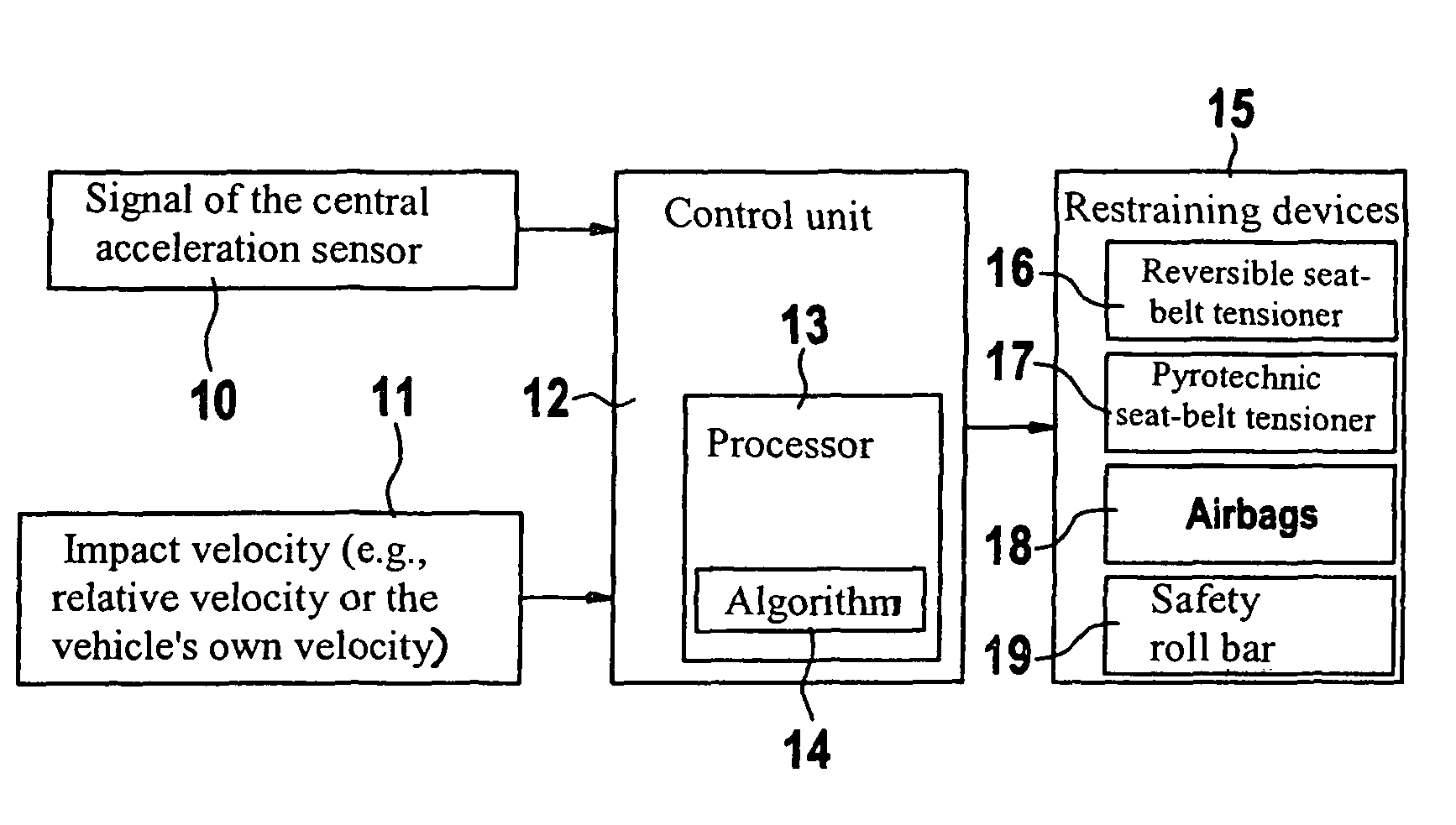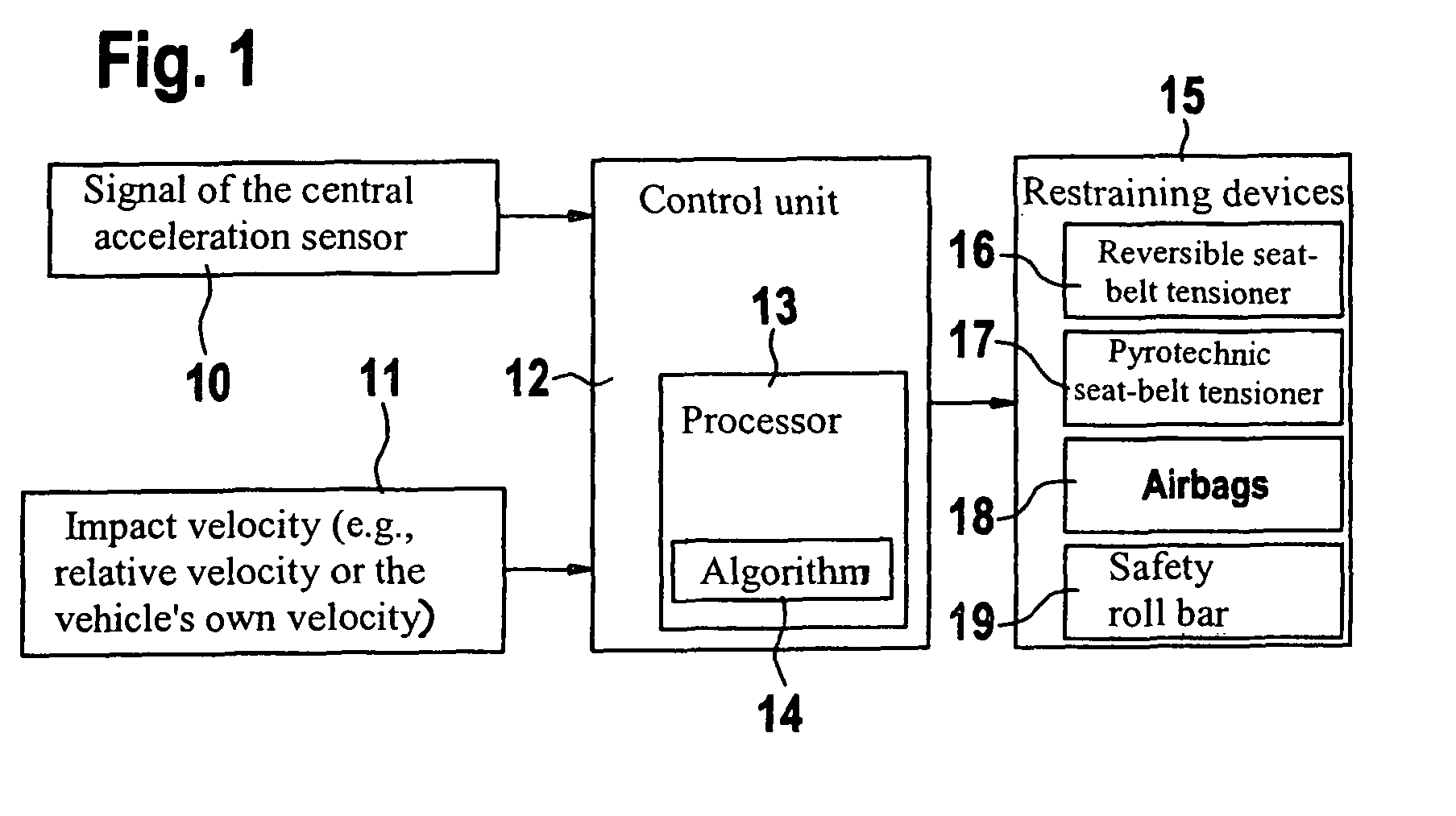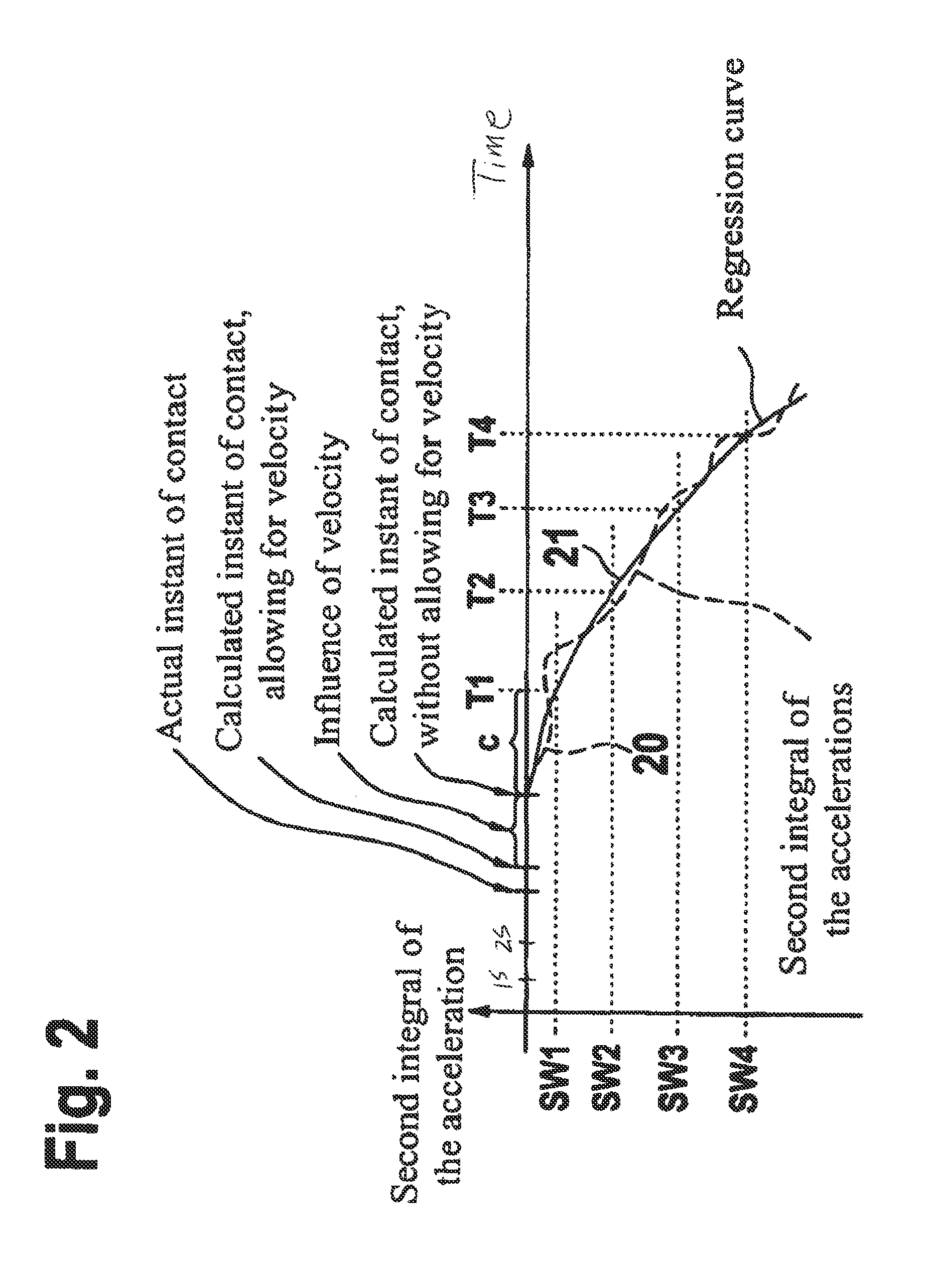Device for determining the instant a vehicle makes contact with an impact object
a technology for determining the instant a vehicle makes contact with an impact object, applied in the direction of vehicular safety arrangements, wing operation mechanisms, process and machine control, etc., can solve the problem of complicating the use of a function for an approximation
- Summary
- Abstract
- Description
- Claims
- Application Information
AI Technical Summary
Benefits of technology
Problems solved by technology
Method used
Image
Examples
Embodiment Construction
[0012]In a block diagram, FIG. 1 clarifies the device according to the present invention. A control unit 12 has at least one acceleration sensor and receives a signal 10 from the same. This acceleration sensor is typically positioned at least in the longitudinal vehicle direction. However, the acceleration sensors may also be disposed in an angular configuration in control unit 12. In particular, a 45° placement of two acceleration sensors is known, which enables accelerations to be sensed in one plane. An acceleration sensor positioned in the transversal vehicle direction is also customary.
[0013]The control unit has a processor 13 for executing an algorithm 14 for determining the instant of contact. In addition to algorithm 14, other algorithms are also executed, for example for determining the triggering times for the restraining devices. Accordingly, control unit 12 controls restraining devices 15 via trigger circuits. These include reversible seat-belt tighteners 16, which, in p...
PUM
 Login to View More
Login to View More Abstract
Description
Claims
Application Information
 Login to View More
Login to View More - R&D
- Intellectual Property
- Life Sciences
- Materials
- Tech Scout
- Unparalleled Data Quality
- Higher Quality Content
- 60% Fewer Hallucinations
Browse by: Latest US Patents, China's latest patents, Technical Efficacy Thesaurus, Application Domain, Technology Topic, Popular Technical Reports.
© 2025 PatSnap. All rights reserved.Legal|Privacy policy|Modern Slavery Act Transparency Statement|Sitemap|About US| Contact US: help@patsnap.com



